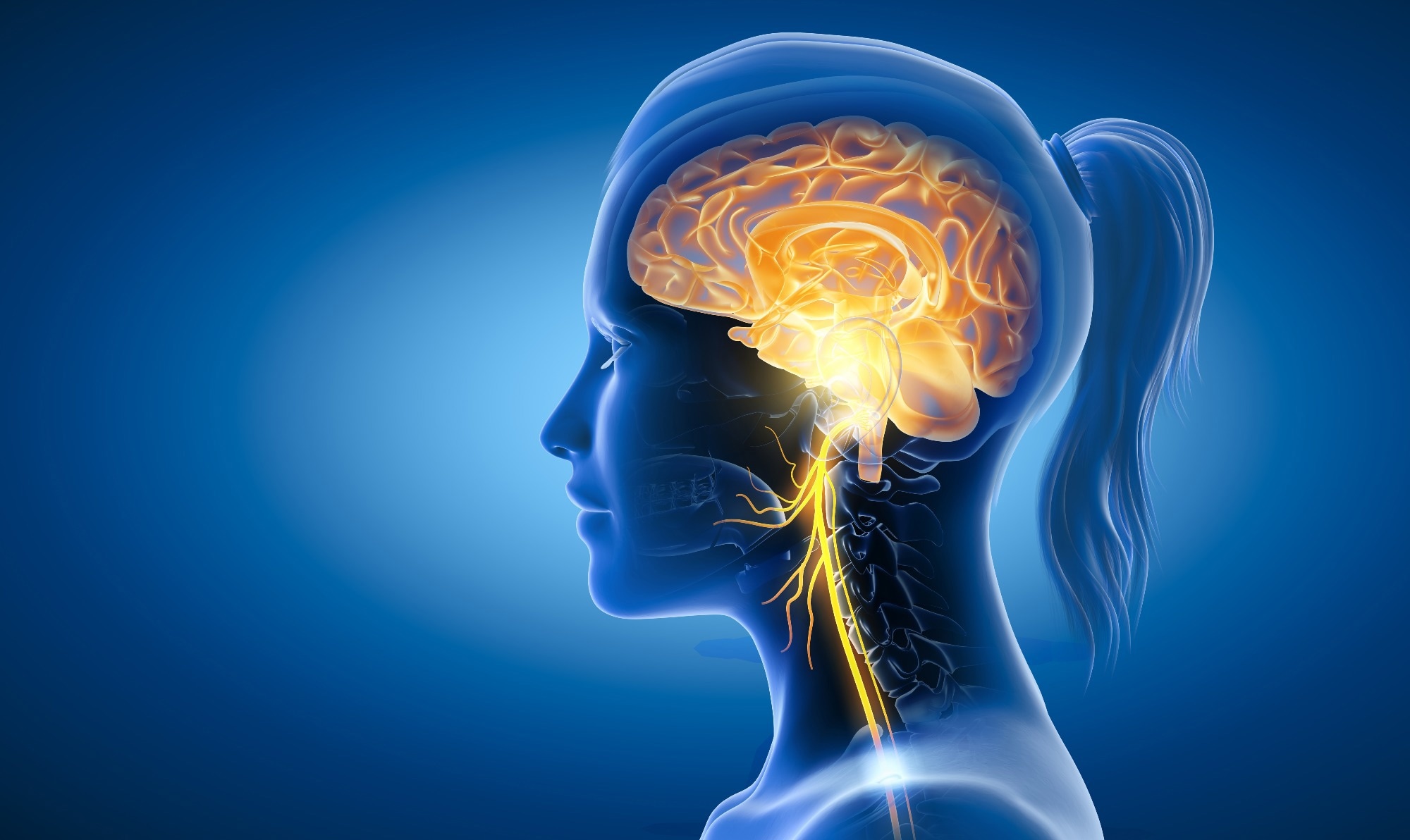
[ad_1]
In a up to date find out about posted to Preprints with The Lancet* server, a group of researchers carried out an in depth database seek to spot research offering constant information on structural and useful alterations in organs and frame portions innervated through the vagus nerve in topics with post-coronavirus illness 2019 (COVID-19) situation (PCC), sometimes called lengthy COVID.
The find out about aimed to investigate If vagus nerve disorder has a central pathogenic function within the pathophysiology of the post-COVID situation.
 Find out about: Vagus Nerve Disorder within the Submit-COVID-19 Situation. Symbol Credit score: Axel_Kock/Shutterstock.com
Find out about: Vagus Nerve Disorder within the Submit-COVID-19 Situation. Symbol Credit score: Axel_Kock/Shutterstock.com

 *Vital understand: Preprints with The Lancet publishes initial clinical stories that aren’t peer-reviewed and, subsequently, must no longer be considered conclusive, information medical apply/health-related conduct, or handled as established knowledge.
*Vital understand: Preprints with The Lancet publishes initial clinical stories that aren’t peer-reviewed and, subsequently, must no longer be considered conclusive, information medical apply/health-related conduct, or handled as established knowledge.
Background
PCC or long-COVID impacts a minimum of 5 to ten% of people who live to tell the tale acute critical acute breathing syndrome coronavirus 2 (SARS-CoV-2) an infection. The vagus nerve innervates the principle websites essentially suffering from PPC, e.g., the pharynx, larynx, center, lungs, and gastrointestinal (GI) tract.
Thus, it’s most likely that early, chronic alteration of the vagus nerve supplies perception into a number of PCC signs, equivalent to dysphagia, dyspnea, and dysautonomia. Working out how the vagus nerve interacts with COVID-19 would allow a greater working out of PCC pathogenesis.
Ultimately, this may assist to find extra correct diagnostics and coverings for PCC. Then again, there’s nonetheless a loss of purpose proof of vagus nerve disorder in topics with PCC is missing.
In regards to the find out about
Within the provide cross-sectional Vagus-COVID-19 find out about, researchers recruited age and gender-matched topics with PCC, of which 30, 14, and 16 had signs suggesting vagus nerve disorder, acute COVID-19-recovered, and and not using a COVID-19 historical past, respectively. They in comparison their vagus nerve construction and capability.
All find out about contributors had a minimum of one vagus nerve-related symptom, e.g., dysphonia, dysphagia, dyspnea, tachycardia, cough, orthostatic hypotension, GI tract perturbations, dizziness, or neurocognitive problems, from the WHO-specified listing.
They recognized those folks from a potential observational cohort of COVID-19 sufferers who shrunk the illness between September 2021 and March 2022. The group accumulated demographic information, COVID-19 historical past, and a questionnaire enquiring 36 chronic PCC signs for every find out about crew.
For morphological overview of the vagus nerve, the group carried out a neck and thoracic ultrasound of breathing muscular tissues. In useful exams, they carried out dysphonia, dysphagia, and dysautonomia checks. Different checks integrated most inspiratory drive (MIP), center charge variability (HRV), and sympathetic-reflex reaction (SRR).
They described steady variables the usage of usual deviation (SD) or interquartile vary(IQR); specific elements as percentages. Subsequent, they in comparison quantitative variables the usage of the Mann–Whitney check and used the Kruskal–Wallis check for comparisons throughout greater than two teams. In any case, a chi-squared check in comparison estimated proportions.
Effects
Of 341 contributors with PCC, maximum had been girls with a pre-COVID-19 historical past of hypersensitive reactions. Additionally, 67% of contributors had a number of vagus nerve-related signs, with extra signs prevalent in folks with PCC than in COVID-19-recovered and SARS-CoV-2 uninfected folks, i.e., the opposite two find out about teams.
4 contributors with PCC had alterations involving thickening and higher echogenicity of the perineurium, while two had focal thickening of the nerve, as assessed in neck ultrasound. Within the thoracic ultrasound, 1430 contributors with PCC had flattened diaphragmatic curves.
Over 60% of topics with PCC had a discount in most inspiratory drive, ceaselessly related to an important lower in diaphragm thickness and mobility, suggesting breathing muscle weak spot that might justify dyspnea, albeit lung imaging being customary.
The find out about opinions demonstrated the organicity of the PCC. The common purpose observations had been altered dysphonia scales, discounts in MIP, and knocking down of each hemidiaphragms, adopted through decreased esophageal-gastric-intestinal peristalses and adjusted swallowing potency.
Equivalent adjustments happen all over vagus nerve irritation. Additionally, topics with Guillain-Barré syndrome have structural adjustments within the vagus nerve and cervical spinal roots. Neural or perineural thickening noticed in lateral neck ultrasound steered SARS-CoV-2-induced direct and oblique nerve harm, i.e., neuroinflammatory reaction.
Research have described diaphragm disorder with an important relief in contractility in survivors of critical COVID-19, very similar to myopathy of post-intensive care syndromes. Then again, this find out about’s observations aren’t resulting from post-intensive care syndrome.
Additionally, this find out about didn’t file intensive knowledge at the inside construction of the nerve or the perineurium, particularly in post-SARS-CoV-2 an infection ultrasounds. Additionally, this find out about’s vagus nerve ultrasound findings had been in putting distinction with 11 topics with PCC having a smaller cross-sectional house of each vagus nerves.
Conclusions
The find out about findings level to a the most important pathogenic function of vagus nerve disorder within the PCC pathophysiology.
It evidenced natural alterations alongside the vagus nerve in PCC sufferers. This information is extremely informative for medical opinions of the PCC syndrome, to tell PCC-related cohort research, and facilitate comparing remedies to give a boost to PCC-related dysautonomia.
Long run research must examine whether or not vagus nerve ultrasound may fetch other findings in topics with PCC all over the early and overdue levels of the illness, which would possibly have an effect on its healing interventions.

 *Vital understand: Preprints with The Lancet publishes initial clinical stories that aren’t peer-reviewed and, subsequently, must no longer be considered conclusive, information medical apply/health-related conduct, or handled as established knowledge.
*Vital understand: Preprints with The Lancet publishes initial clinical stories that aren’t peer-reviewed and, subsequently, must no longer be considered conclusive, information medical apply/health-related conduct, or handled as established knowledge.
[ad_2]